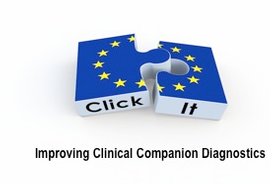The largest non-university research and technology institute in Austria, AIT is owned jointly by the Federal Ministry for Transport, Innovation and Technology and the Federation of Austrian Industries. AIT currently employs 764 staff members with a total of 482 researchers organized in five different innovation areas working on the development of tools, technologies and solutions which are considered to be of future relevance for the Austrian and European society.
The molecular imaging group is structurally incorporated in AIT´s Health & Environment Department. The work group is fully equipped for all aspects of PET radiochemistry and radiopharmacy as well as preclinical imaging. The molecular imaging group has access to a cyclotron, a state of the art radiochemistry laboratory and operates Austria´s first preclinical imaging center featuring a Siemens microPET Focus 220 small-animal PET scanner and a 1 Tesla small-animal MRI system (ICON, Bruker). The AIT group also maintains its own animal facility, operated by an experienced veterinarian. The molecular imaging group focuses on the application of PET to address key issues in the fields of oncology and neurology.
Major research activities in relation to this proposal are
- PET tracer development
- Radiotracer ADME research
- Preclinical µPET and µMRI protocol development
- Tumor xenograft models
- Ex vivo studies (e.g. autoradiography)
The interdisciplinary team of the molecular imaging covers the field of pharmacy, biology, physics, radiochemistry and biomedical research. The molecular imaging team is highly experienced and specialized in almost all fields of preclinical imaging experiments including animal monitoring, health assessment and surgical procedures. In addition, the research group has a strong expertise in the preparation of radiopharmaceuticals and closely collaborates with an onsite, outsourced GMP radiopharmaceutical production facility. Moreover, the imaging group is integrated in various national or international collaborative (imaging) networks.
Scientist Thomas Wanek
Dr. Wanek is trained in bioengineering and preclinical and clinical research, with more than 15 years expertise in PET radiochemistry and small animal PET imaging. He is currently head of a molecular imaging group and his research focus is on hypoxia imaging using novel imaging approaches as well as PET imaging of ABC and SLC transporters in health and disease. Publication comprises more than 30 peer-reviewed articles.


